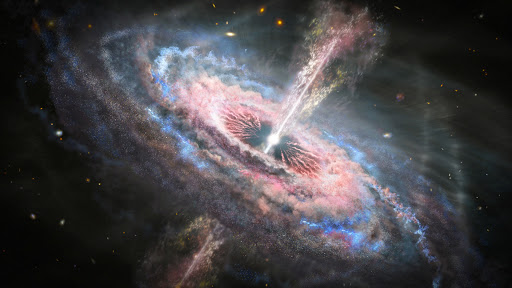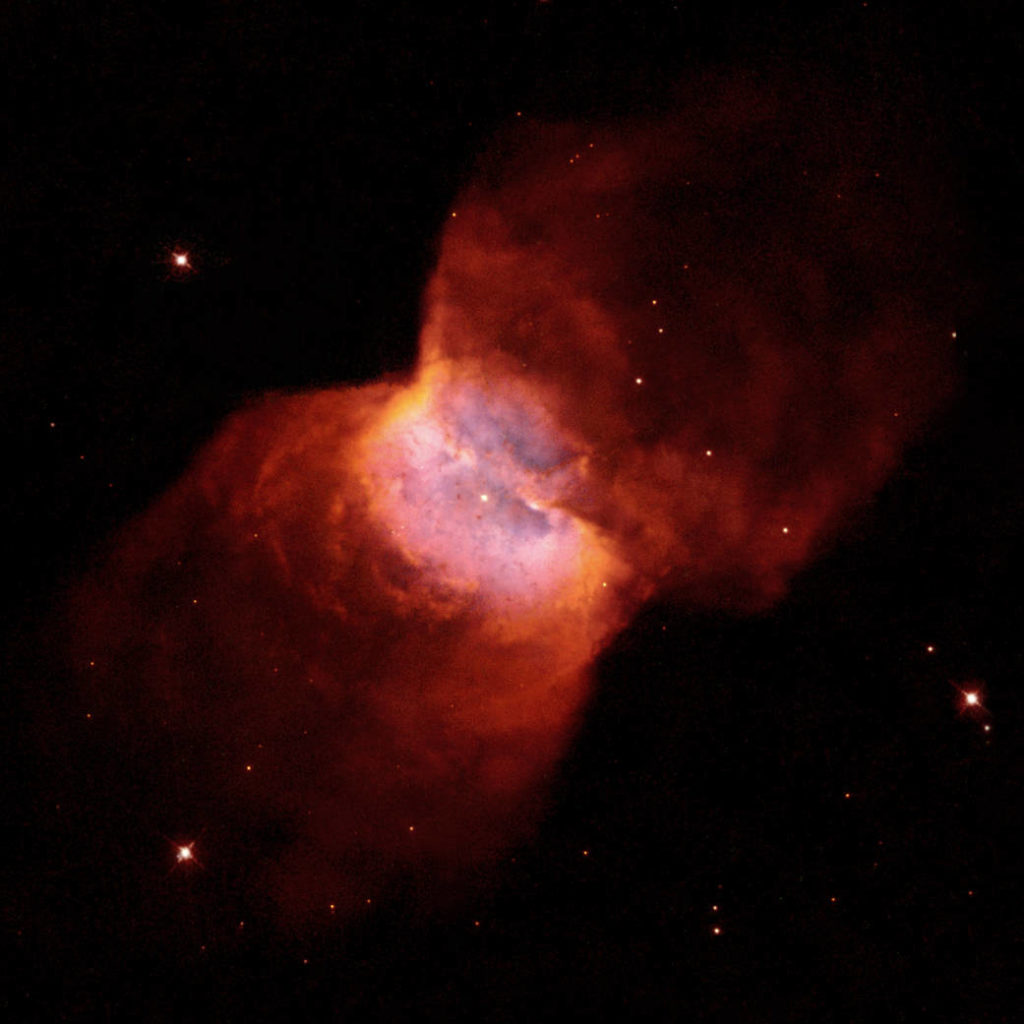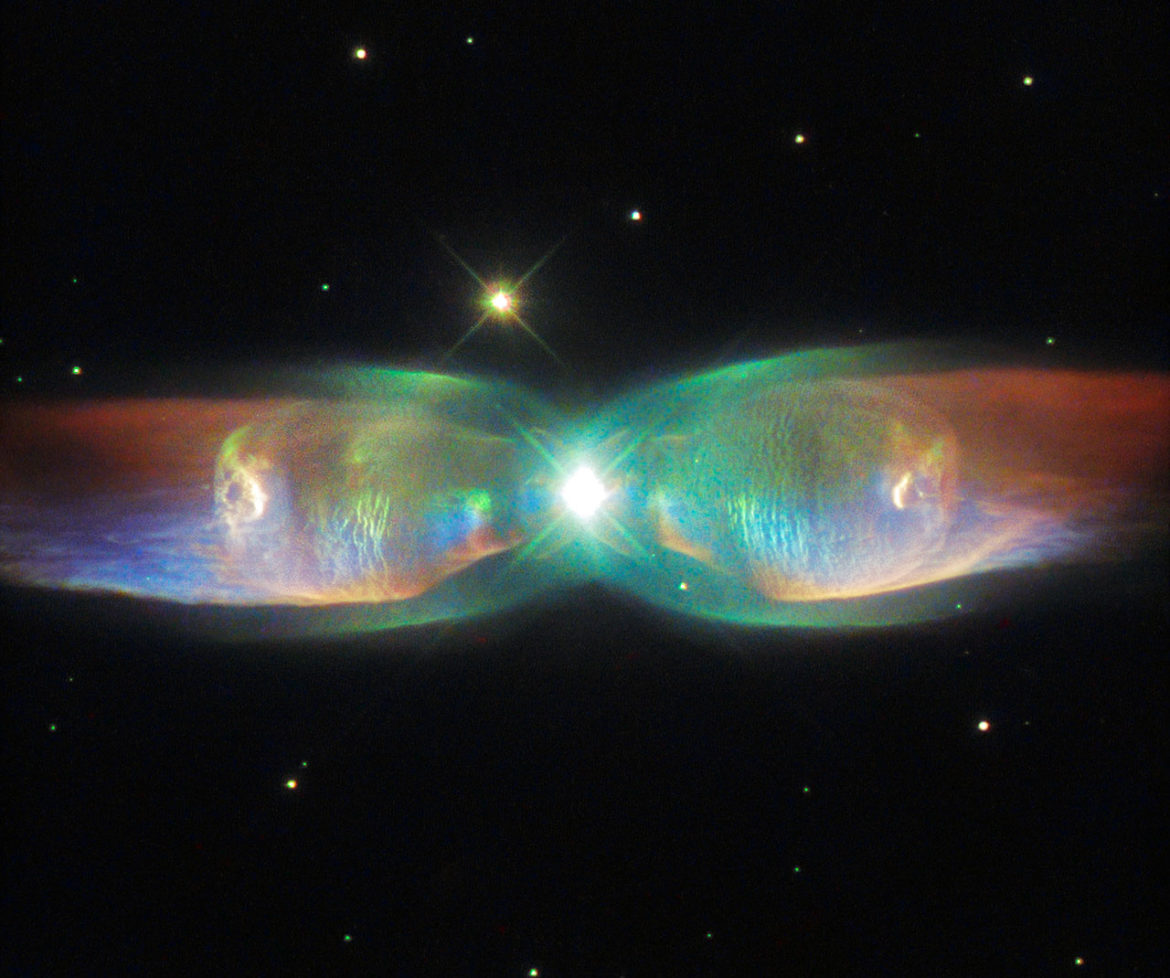Space butterfly, rainbow Jets Fascinating photos of what out there
Thousands of light-years away, there’s a space butterfly, Quasars, nebulas, and everything you could imagine. Colored with brilliant blues and clouds of purple and red. Images that will astound everyone.

Quasars are the ultra-bright cores of distant active galaxies. These objects are among the most distant and luminous objects known. Their central engines are supermassive black holes that are engorged with infalling dust, gas, and stars. Now, astronomers using the NASA/ESA Hubble Space Telescope have discovered extremely energetic outflows that emanate from distant quasars. These outflows tear across interstellar space similar to tsunamis on Earth, wreaking havoc on the galaxies in which the quasars reside. Read more from Sci-news

So named for its resemblance to the winged insect, the “butterfly” is actually a planetary nebula — a giant cloud of gas that forms around an ancient star that hasn’t yet exploded. The European Space Observatory’s (ESO) aptly named Very Large Telescope, stationed in host country Chile, recently captured a vibrant image of the interstellar object.
It’s known as NGC 2899 (NGC stands for New General Catalogue, which lists nebulae and other astral bodies like this one). It’s located somewhere between 3,000 and 6,500 light years away from Earth in the constellation Vela, which is visible in the Southern Hemisphere.
This planetary nebula isn’t long for this universe. Ultraviolet radiation lights up the shells of gas surrounding the star and causes them to shine quite brightly, the ESO said — but only for a few thousand years before they break up. That’s a relatively short life span in astronomy.
The Very Large Telescope that captured the image is the “world’s most advanced optical instrument,” according to the ESO. With the accompanying interferometer, the tool can illuminate details 25 times finer than individual telescopes. And on its own, the telescope tucked in the Chilean mountains can see things more than 4 billion times fainter than what the human eye could see. Read more.

Bipolar planetary nebulae are formed when the central object is not a single star, but a binary system, Studies have shown that the nebula’s size increases with time, and measurements of this rate of increase suggest that the stellar outburst that formed the lobes occurred just 1200 years ago.
The image, which was released Wednesday (Aug. 26), shows the Twin Jet Nebula. This nebula is the endgame for a pair of stars, each about the mass of the sun, which are shedding dust outward at 621,400 mph (1 million km/h) down the center of two glowing lobes. The European Space Agency’s Hubble team also unveiled a new video explaining the awesome colors of the Twin Jet nebula and other dazzling nebula forms.
The Twin Jet Nebula, also called PN M2-9, lies 2,100 light-years from Earth. The larger of its two stars has ejected most of its outer layers and is now collapsing down into a white dwarf, and its smaller companion is already one of these superdense stellar corpses.
As the star collapses, its orbit with the white dwarf companion whips the ejecting gas into a frenzy, blasting out two slowly corkscrewing jets that form the expanding gas into two wings (the blue patches at the center of the lobes) Read more from Space.





